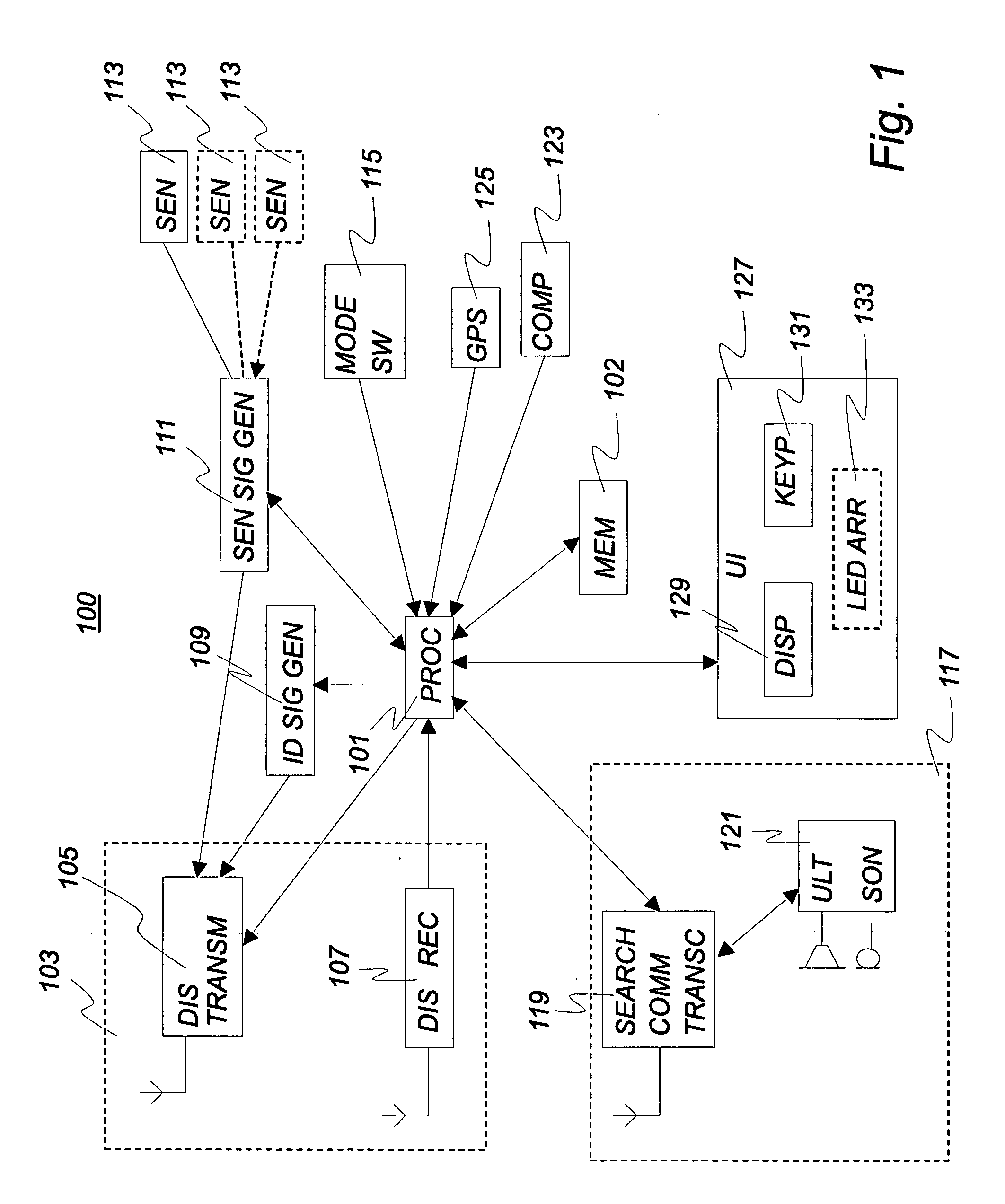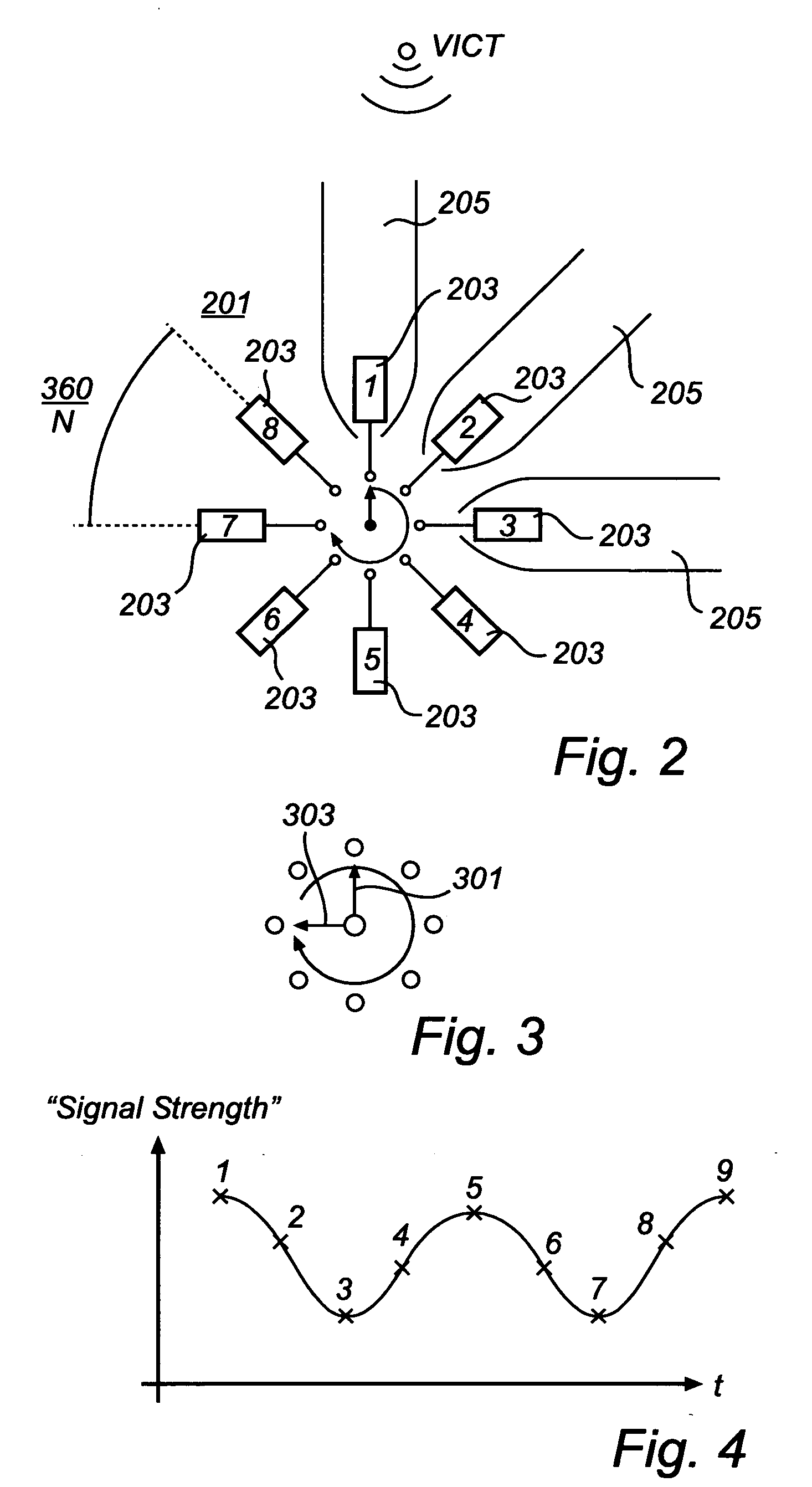Portable rescue device and a method for locating such a device
a rescue device and portability technology, applied in the field of portability rescue devices, can solve the problems of life-threatening to victims, and difficult to see or hear victims, and achieve the effect of reducing the margin of error
- Summary
- Abstract
- Description
- Claims
- Application Information
AI Technical Summary
Benefits of technology
Problems solved by technology
Method used
Image
Examples
Embodiment Construction
[0037] Referring to FIG. 1 a block diagram of an embodiment of the portable rescue device 100 is shown. The device 100 is meant to be carried by a user when she / he is moving around in the wilderness, as exemplified above in conjunction with the description of background of the invention. The device 100 has a processor 101, such as a microprocessor or a CPU, that is central for providing an amount of intelligence to the device. A first communication unit 103, shown as a dashed box, is connected to the processor for handling the transmission and reception of distress signals. The first communication unit 103 includes a distress transmitter 105 including a first antenna for transmitting, more particularly broadcasting, a distress signal from the device. It also includes a distress receiver 107 including a directional antenna structure, which is an assembly of several antennas. The antenna structure of this embodiment is shown in FIG. 2 and will be further described below. An identifica...
PUM
 Login to View More
Login to View More Abstract
Description
Claims
Application Information
 Login to View More
Login to View More - R&D
- Intellectual Property
- Life Sciences
- Materials
- Tech Scout
- Unparalleled Data Quality
- Higher Quality Content
- 60% Fewer Hallucinations
Browse by: Latest US Patents, China's latest patents, Technical Efficacy Thesaurus, Application Domain, Technology Topic, Popular Technical Reports.
© 2025 PatSnap. All rights reserved.Legal|Privacy policy|Modern Slavery Act Transparency Statement|Sitemap|About US| Contact US: help@patsnap.com



